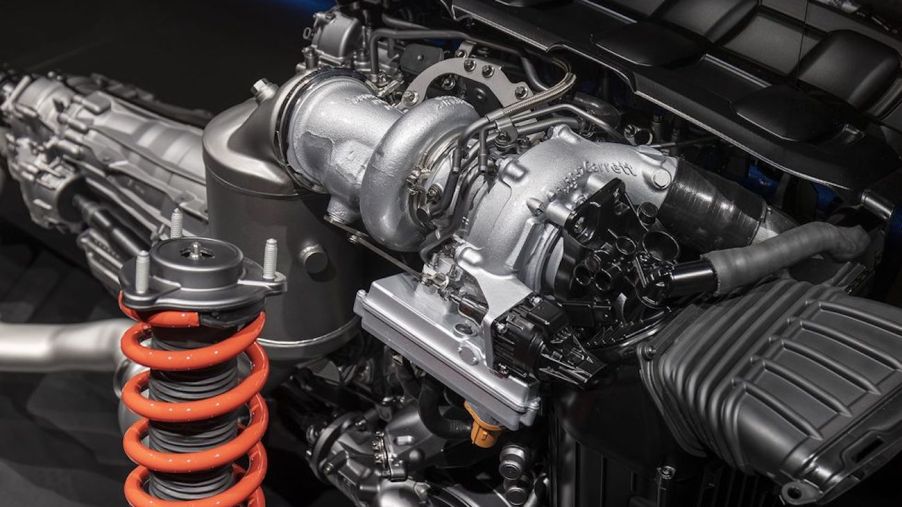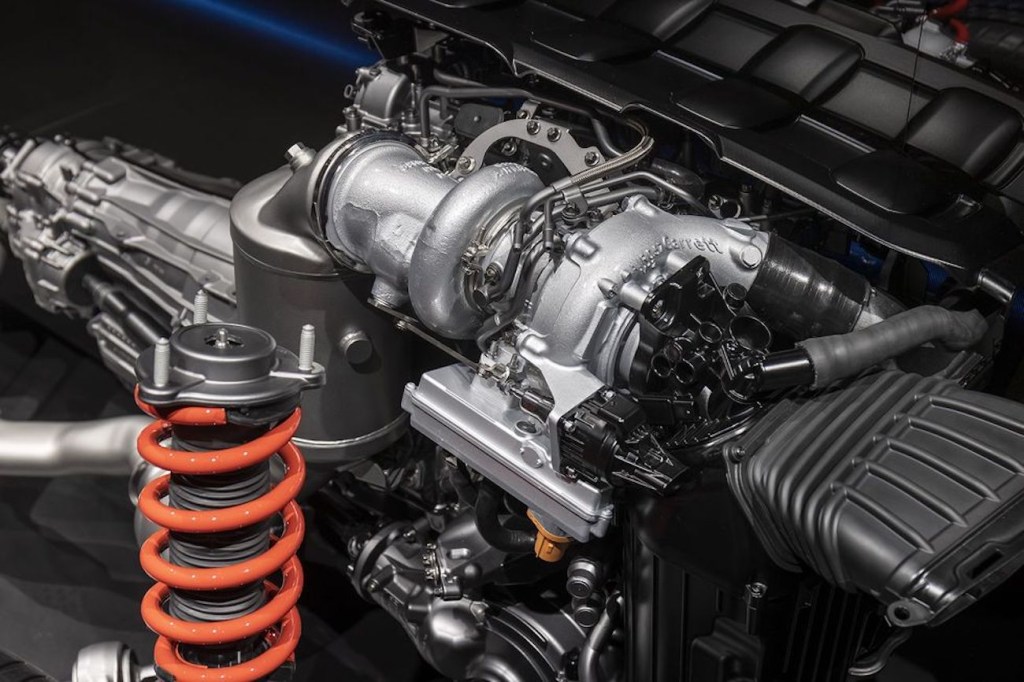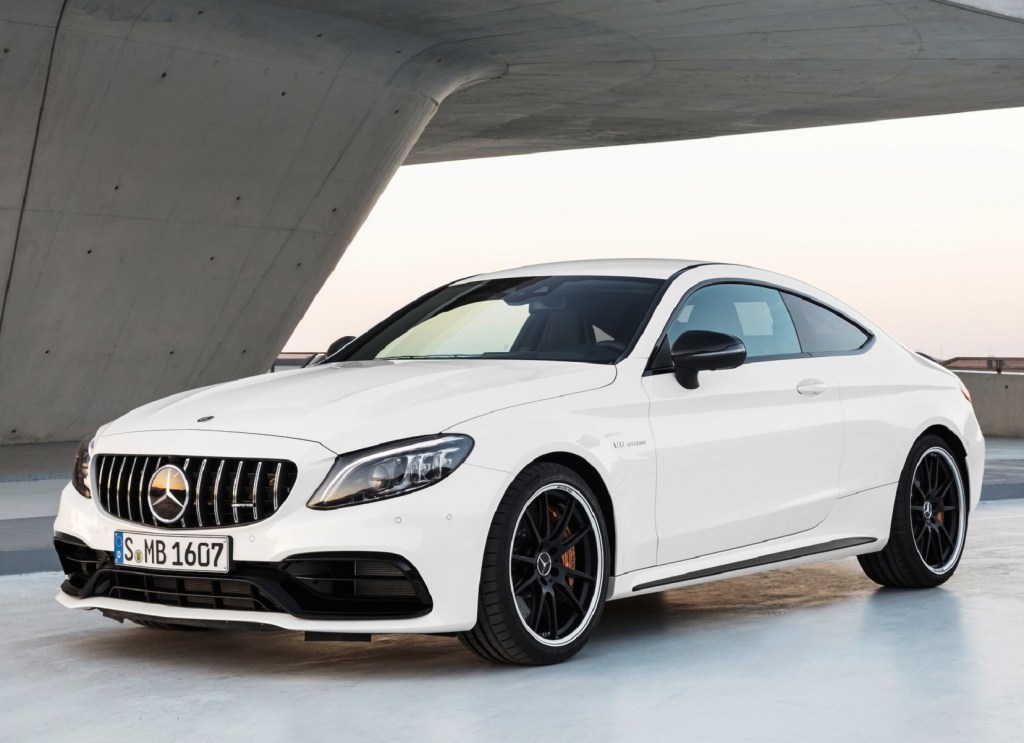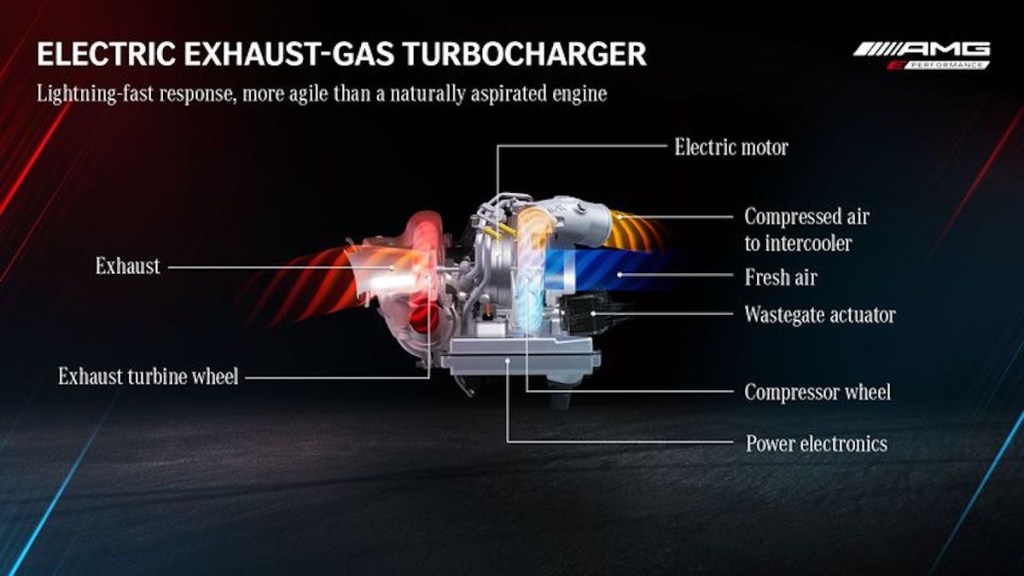
The Next Mercedes-AMG C63 Will Ditch the V8 For a Hybrid 2.0-Liter 4-Cylinder
The Mercedes-AMG line has become synonymous with V8s. The sound and power expected from these tuned Mercedes almost have to come from a big, overpowered V8 – until now. The next Mercedes-AMG C63 will ditch the monster V8 for a turbo hybrid 2.0-liter four-cylinder engine. Don’t fret; somehow, the new AMG won’t be losing any power to speak of.

AMG just made the world’s most powerful production four-cylinder
If you are grumbling about Mercedes-AMG switching from the V8 to a four-cylinder, it’s OK; there’s good news. According to Road & Track, AMG’s 421-hp M139 is officially the world’s most powerful production four-banger. It currently powers the 45-series AMG cars but will soon slip into the C-Class.

For the Mercedes-AMG C63, AMG somehow managed to wring a few more ponies out of the M139, bringing it to a total of 442 horsepower. If this peppered-up 2.0-liter isn’t enough to get your heart pumping, remember, Mercedes also paired it with a hybrid system.
What is an electric turbocharger?
Mercedes-AMG has pulled some serious wizardry in the past, but nothing compares to squeezing 442 horsepower out of a four-cylinder. So how did AMG do it?
AMG slapped an electric turbocharger on the 2.0-liter to really make it sing. Road and Track mentions that the technology AMG uses here is essentially the same idea as the Motor Generator Unit-Heat (MGU-H) used in Formula 1. I’m no mechanic, but I will do my best to explain this gizmo (with a little help from our friends at Road & Track.)
AMG used a 6kW electric motor to spin the shaft connecting the turbine and the compressor to a dizzying 156,000 RPM. This high-rotation spinning eliminates turbo lag by forcing more air into the combustion chamber much quicker than the exhaust-gas-driven turbine can do on its own.
This also means that even when the throttle is closed, the electric motor can keep the turbo spooled up and ready for when it’s time to go. Road & Track also mentions that AMG engineers say that this electric turbocharger allows for a far more precise level of boost control.
The AMG C63 needs a lot of electricity
Road & Track reports that the AMG C63 requires tons of electrical power to make the turbocharger work properly. That’s where AMG’s new E-Performance models come into play. These upcoming E-performance models have an Electric Drive Unit (EDU) mounted on the rear axel. This EDU is a 6.1-kWh battery and an electric motor that drives the wheels through a two-speed gearbox. It seems that the electric motor that spins the turbocharger shaft will draw its high-voltage needs from the EDU system’s battery.

The other side of this hybrid coin is that there is some extra power leftover from spinning that turbocharger shaft. Mercedes-AMG says that the EDU can make up to 201 hp on its own, but only in short sprints, but can sustain 94 hp continuously. Before we get too worked up, Mercedes-AMG will likely be tuning that electric power down from 201 hp but will let the electric motor assist it, adding torque to the 2.0-liter to make up for the missing four cylinders. It seems that the possibility of a 600-something-horsepower hybrid four-cylinder is not out of the question for AMG, though.
Just because Mercedes-AMG is getting with the times and making smaller, more earth-friendly motors don’t mean the German tuners aren’t still obsessed with making really powerful cars.



